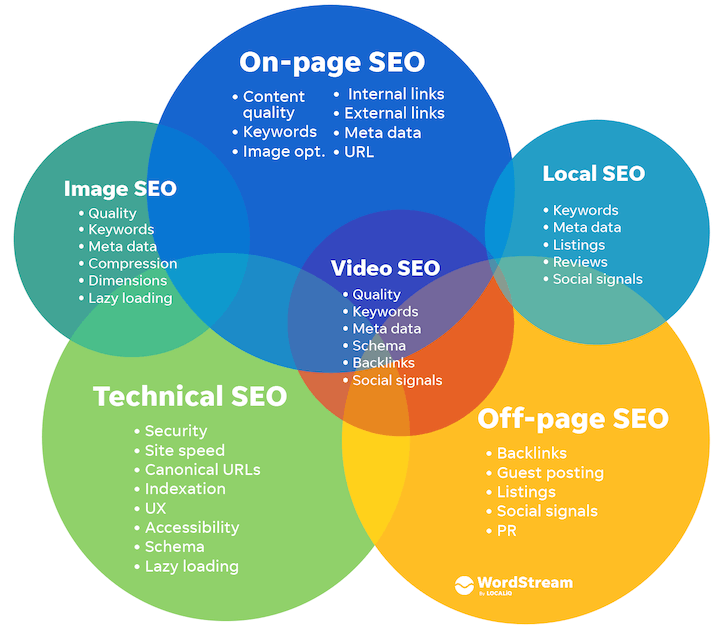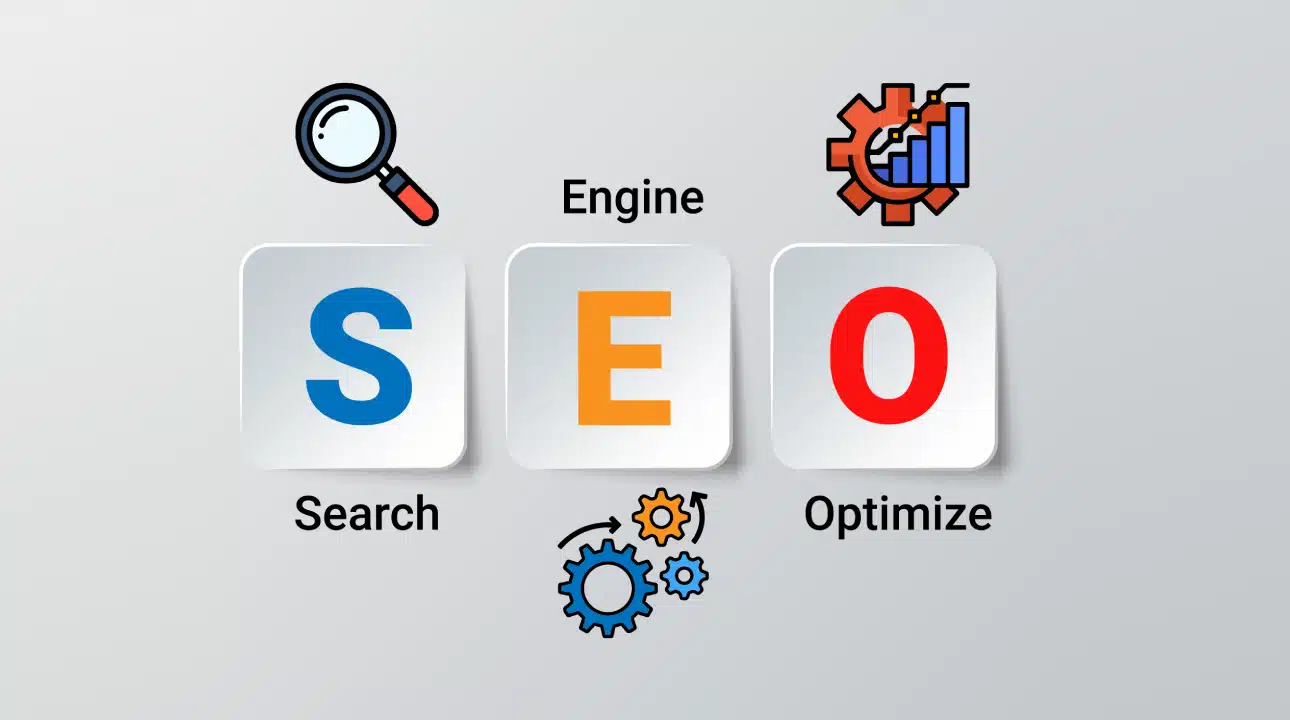Introduction
A strong online presence is essential for any company, brand, or individual hoping to thrive in the current digital era. Search Engine Optimization (SEO) is one of the most effective strategies for accomplishing this. You may raise your website’s visibility, attract more natural traffic, and eventually turn visitors into devoted clients by optimizing it for search engines.
However, SEO is more than just understanding the fundamentals of meta tags and keyword research. It involves knowing how to use a variety of strategies that complement one another to improve your website’s performance and rating in search engine results pages (SERPs). We will delve deeply into tried-and-true SEO strategies in this post to help you remain ahead of the competition and increase the exposure of your website.

1. Understanding the Basics of SEO
It’s crucial to review the core elements of SEO that serve as the cornerstone for all other strategies before delving into more complex ones. There are three primary categories for SEO:
- On-page SEO: Describes the components of your website, including content, headings, meta descriptions, title tags, and URL structure, that you can improve for higher search ranks.
- Activities done outside of your website, namely backlinks, social signals, and brand mentions, are referred to as off-page SEO. In the viewpoint of search engines, this increases the authority and reliability of your website.
- Enhancing your website’s technical features, such page speed, mobile friendliness, and secure connections, is the main goal of technical SEO. This guarantees that your website is both user-friendly and crawlable.
2. Keyword Research: The Heart of SEO Strategy
A successful SEO strategy requires thorough keyword research. You may better adapt your website to your audience’s needs by knowing the search phrases they use to find your goods, services, or content.
How to Perform Keyword Research
- Use Keyword Research Tools: You may identify high-volume keywords that are pertinent to your niche by using tools like Google Keyword Planner, Ahrefs, and SEMrush.
- Pay Attention to Long-Tail Keywords: Although long-tail keywords (three or more words) may receive fewer searches, they often have greater conversion rates and less competition.
- Examine Competitor Keywords: Examine the keywords that your rivals are ranking for and think about focusing on them with better-optimized content.
- Think About User Intent: It’s critical to comprehend the purpose of the search query. Do users intend to make a transaction (transactional intent), seek out a service (navigational purpose), or seek information (informational intent)?
3. Creating High-Quality Content
At the heart of SEO is content. Even the best technical optimization will be useless without valuable, interesting, and high-quality content. Good content keeps people interested, draws backlinks, and helps you rank for your goal keywords.
How to Create SEO-Friendly Content
- Respond to Searcher Questions: Make sure your material addresses the typical queries and issues that members of your target audience encounter. You’ll rank higher for featured snippets and other rich results if you do this.
- Incorporate your target keywords organically into the content, headings, and subheadings. Steer clear of keyword stuffing since it may result in Google penalties.
- Create Captivating Headlines: In addition to drawing readers in, attention-grabbing headlines let search engines know what your content is about.
- Put readability first by using subheadings, bullet points, and crisp paragraphs to divide your text into manageable sections. To keep your readers interested, use short words and straightforward language.
- Add Visuals: Pictures, movies, infographics, and other types of media may make your information stand out and improve the user experience. Don’t forget to add pertinent alt text to optimize photos.
On-Page Optimization: Maximizing Each Page’s Potential
It’s critical to optimize each page for search engines after you have valuable content. On-page SEO makes ensuring that the pages on your website are organized so that search engines can quickly crawl, comprehend, and rank them.
Essential On-Page SEO Factors
- One of the most crucial on-page SEO components is the title tag. Your goal term should appear in your title tag, and it should be interesting enough to entice readers to click. For best SERP display, keep it around 60 characters.
- Meta Descriptions: Although they have no direct impact on rankings, meta descriptions can increase click-through rates (CTR). Compose succinct, pertinent descriptions that draw readers in and contain the target term.
- Header Tags (H1, H2, H3): Utilize headers to organize your content and let search engines know it is relevant. Along with describing the page’s major concept, your H1 should contain your primary keyword.
- URL structure: brief, informative URLs with pertinent keywords are ideal. Steer clear of lengthy numerical sequences and special characters.
- Internal Linking: To link related pages on your website together, use internal links. This increases the authority of your pages and makes it easier for search engines to crawl your website.
- Optimize for Mobile: One ranking criteria is mobile friendliness. Make certain that your website is responsive and provides a consistent user experience on all platforms.

5. Building Backlinks: The Backbone of SEO Success
One essential element of off-page SEO is backlinks. Good backlinks from reputable websites serve as “votes of confidence” for your content, telling search engines that it is useful and reliable.
- Provide Link-Worthy Content: Creating excellent content that people want to link to is the first step in establishing backlinks. This could take the kind of resources, research reports, infographics, or blog entries.
- Guest Blogging: One of the best ways to get backlinks is to write guest posts for respectable blogs in your niche. Make sure to incorporate pertinent backlinks to your own website.
- Engage Influencers: Establish connections with influential people in your field and request links to your work. This can be accomplished through partnerships, email campaigns, or social media marketing.
- Finding broken links on reputable websites in your sector and providing your material as a substitute is known as broken link building. In addition to getting you a useful backlink, this benefits the owner of the website.
- Make Use of Social Media: Post your material on social media sites to promote interaction and backlinks. Social media links can raise awareness and result in backlinks, but they are not a direct ranking component.
Also Read:https://trendspotter.online/digital-marketing-transform-business-in-era/
6. Technical SEO: Fine-Tuning Your Website’s Performance
Search engines can crawl, index, and comprehend your website thanks to technical SEO. It entails a number of enhancements that enhance site performance and user experience.
Key Technical SEO Factors
- Site Speed: One important ranking criteria is page speed. Websites that load slowly offer a bad user experience and may increase bounce rates. You can find and address speed problems with the aid of tools like Google PageSpeed Insights.
- Mobile Optimization: Your website’s performance on mobile devices is crucial because of mobile-first indexing. Make sure the content on your website is easy to access on smaller displays and that the design is responsive.
- XML Sitemap: An XML sitemap facilitates more effective website crawling by search engines. Make certain that your sitemap is current and uploaded to Google Search Console.
- SSL Certificate: Both visitors and search engines trust secure websites (those that use HTTPS). Verify that your website is SSL-secured to safeguard user information and raise search engine rankings.
- Structured Data Markup: By including schema markup into your website, search engines are better able to comprehend your content and offer rich snippets and other improved search results.

7. Local SEO: Targeting Your Community
Local SEO is an essential tactic for companies that depend on local clients. You may raise your profile in your neighborhood by making your website and content more relevant to local search terms.
Local SEO Tactics
- Google My Business: Take control of and enhance your listing on Google My Business. Make sure that all of the company’s details, including the address, phone number, and hours, are correct and current.
- Local Keywords: Include local keywords in your content, meta tags, and headers. For example, if you’re a dentist in Chicago, use keywords like “Chicago dentist” or “best dentist in Chicago.”
- Local Citations: Obtain listings in regional citation databases and directories. Your local SEO is improved when your company’s information is accurate and consistent across all platforms.
- Reviews from Customers: Invite clients to post complimentary evaluations on your GMB page and other review sites. In addition to improving local rankings, positive reviews increase potential clients’ trust.
8. Monitor and Analyze SEO Performance
Long-term success in SEO depends on tracking your progress, which is an ongoing effort. You can determine what is effective and what requires improvement by doing regular analysis.
Tools for Monitoring SEO Performance
- Google Analytics: Monitor user activity, website traffic, and conversion rates. This aids in determining which pages require optimization and which are operating efficiently.
- Google Search Console: Track keyword ranks, keep an eye on the health of your website, and spot indexing problems. For technical SEO, this is a useful tool.
- Ahrefs and SEMrush: These tools offer comprehensive information about your backlink profile, keyword rankings, and competitor performance.
Also Read:https://trendspotter.online/business-insurance-a-comprehensive-overview/
Conclusion
It takes time to become an SEO expert. It calls for perseverance, steady work, and a readiness to adjust to ever shifting algorithms. You may set the stage for long-term SEO success and a sharp increase in website visibility by putting the tactics described in this article into practice.
Keep in mind that SEO is a journey rather than a race. Prioritize producing top-notch content, search engine optimizing your website, establishing reputable backlinks, and making sure users have a seamless experience. You may dominate search results and increase organic traffic to your website by implementing the appropriate strategies.
